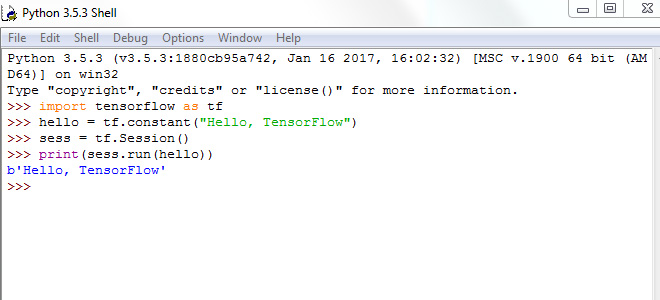This is the first tutorial in our TensorFlow tutorial series.
What is TensorFlow?
TensorFlow, Google's gift to the world of machine learning. In 2015, Google open sourced the TensorFlow and all of its reference implementation and made all the source code available on GitHub under the Apache 2.0 license.
TensorFlow, in the most general terms, is a software framework for scientific and numerical computation based on dataflow graphs. It uses computational data-flow graphs to represent complicated neural-network architecture.
TensorFlow's main interface is Python, but like Caffe, its foundation is written in C++ for improved performance. TensorFlow supports execution on both CPUs and GPUs.
The core of TensorFlow is in C++, and it has two primary high-level front-end languages and interfaces for communicating and implementing the computation graphs. The most developed front-end is in Python, used by developers and data scientists. The C++ front-end gives relatively a low-level API, appropriate for efficient execution in embedded systems.
Why Deep Learning with TensorFlow
TensorFlow has built in support for deep learning and neural networks so it's easy to assemble a net assign parameters and run the training process. It also has a collection of simple trainable mathematical functions that are useful for neural networks and any gradient based machine learning algorithm will benefit from TensorFlow auto differentiation and sweet of first rate optimizers. Due to the large collection of flexible tools TensorFlow compatible with many variants of machine learning.
Features of TensorFlow
- TensorFlow provides programming support for deep neural networks and machine learning techniques.
- TensorFlow used for defining, developing, and precisely calculating mathematical expressions by multi-dimensional arrays (tensors).
- TensorFlow provides a flexible architecture that facilitates to deploy numerical computation to one or more CPUs or GPUs in a desktop, server, or mobile device with a single API.
- TensorFlow is highly scalable for computation across different systems and huge data sets.
- TensorFlow runs on multiple platforms like Windows, Linux, Mac machines and Android.
- TensorFlow comes with a handy dashboard called TensorBoard for the analysis of the developed models.
Installation on Windows
You can install and use TensorFlow on any platforms such as Linux, Mac OS, and Windows. For Windows TensorFlow supports Python 3.5.x and 3.6.x. (I have Python 3.5.3 that's why I am installing TensorFlow 1.3.0 version.)
To install TensorFlow here we use Python's official package manager pip. Now, in Windows open command prompt and run below command:
C:\> pip3 install tensorflow==1.3.0

Installing other dependency packages.

Testing TensorFlow Installation

